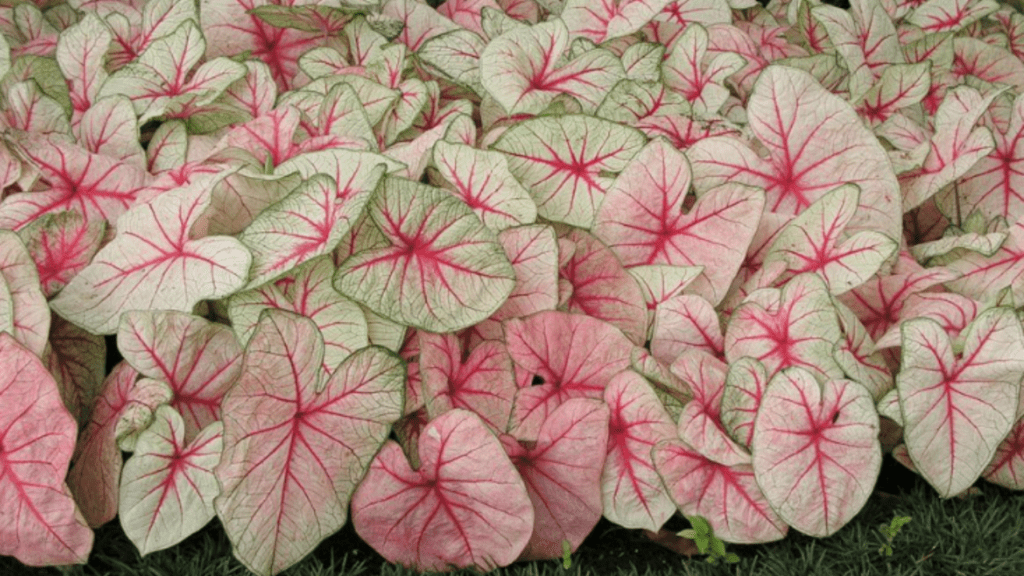
Caladium Care Guide: How to Nurture Your Indoor Beauties
Caladiums are prized for their vibrant foliage, making them popular choices for indoor and outdoor gardens alike. Learning proper caladium care ensures these plants thrive and adorn your space with their colorful leaves. Whether you’re a beginner or an experienced gardener, this guide will provide you with all the information you need to cultivate healthy and beautiful caladiums.
Table of Contents
ToggleUnderstanding Caladiums
Description of caladium plants (Caladium bicolor)
Caladium plants, also known as Caladium bicolor, are prized for their vibrant and colorful foliage. They are tropical plants that are often grown for their attractive and decorative leaves rather than their flowers. Caladium leaves come in a variety of colors and patterns, including combinations of green, pink, red, and white. They can brighten up any indoor or outdoor space with their striking and eye-catching appearance.
Caladium Care Guide: How to Nurture Your Indoor Beauties
Proper care is essential for the health and longevity of caladium plants. They thrive in warm, humid environments and require regular watering and well-draining soil. It is important to keep them away from direct sunlight as it can scorch their delicate foliage.
Whether you are a beginner or an experienced gardener, this guide will provide you with all the information you need to cultivate healthy and beautiful caladiums. With the right care and attention, these stunning plants can bring a touch of tropical beauty to your home or garden.
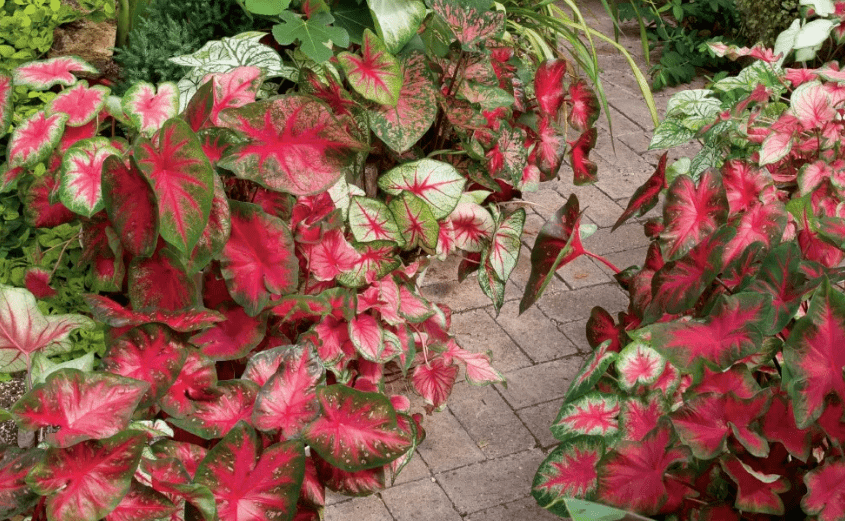
Varieties of caladiums and their characteristics
Caladium leaves come in a wide variety of colors and patterns, making them a popular choice for indoor and outdoor spaces. The leaves can feature combinations of green, pink, red, and white, creating a striking and eye-catching appearance. Proper care is essential for the health and longevity of caladium plants. They thrive in warm, humid environments and require regular watering and well-draining soil. It is important to keep them away from direct sunlight as it can scorch their delicate foliage. Whether you are a beginner or an experienced gardener, this guide will provide you with all the information you need to cultivate healthy and beautiful caladiums. With the right care and attention, these stunning plants can bring a touch of tropical beauty to your home or garden.
Benefits of growing caladiums
Caladiums are a popular choice for indoor and outdoor spaces due to the wide variety of colors and patterns of their leaves. They can feature combinations of green, pink, red, and white, creating a striking and eye-catching appearance. In addition to their visual appeal, caladiums are relatively low maintenance plants, making them a great choice for both beginner and experienced gardeners. They thrive in warm, humid environments and require regular watering and well-draining soil. With the right care and attention, caladiums can bring a touch of tropical beauty to your home or garden. Whether you are looking to liven up your indoor space or add color to your outdoor garden, caladiums can be a great addition to your plant collection.
Choosing and Planting Caladiums
Selecting the right caladium varieties for your environment
Is important to ensure their success in your garden. Different caladium varieties have different light and water requirements, so it’s crucial to choose varieties that will thrive in your specific environment. For example, some varieties prefer more shade, while others can tolerate more direct sunlight. It’s also important to consider the size of the space where you plan to plant the caladiums, as some varieties grow larger leaves and may need more room to spread out. When planting caladiums, make sure to choose a well-draining soil and water them regularly to keep the soil consistently moist. Adding a layer of mulch around the plants can also help retain moisture and regulate soil temperature. With the right care and attention, these stunning plants can bring a touch of tropical beauty to your home or garden.
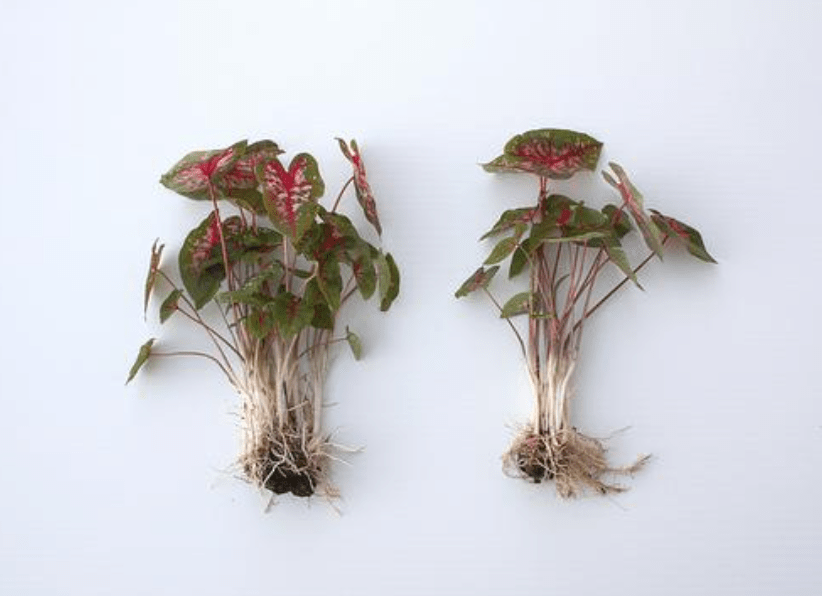
Best times for planting caladiums (spring planting vs. fall planting)
The best time for planting caladiums depends on your specific climate and growing conditions. In general, spring is a great time to plant caladium bulbs, as the soil is warming up and the risk of frost has passed. This allows the plants to get established and start growing before the heat of summer arrives. However, in milder climates, you may also have success planting caladiums in the fall. This gives the bulbs time to establish roots before the cold weather sets in, and they can start growing again in the spring. Ultimately, the best time for planting caladiums will depend on your specific location and climate. Be sure to research the specific needs of the varieties you choose and plan your planting accordingly.
How to prepare soil and pots for planting caladium bulbs
When preparing the soil and pots for planting caladium bulbs, it is important to start with well-draining soil. Caladiums prefer a slightly acidic soil, so adding some peat moss or pine bark to the soil can help create the right pH level. You can also mix in some slow-release fertilizer to provide the bulbs with the nutrients they need to grow.
When it comes to pots, choose a container that has drainage holes to prevent water from pooling around the bulbs. Fill the pots with the prepared soil and plant the bulbs with the knobby side facing up, about 1-2 inches deep. Water the soil thoroughly after planting to help the bulbs settle in.
After planting, place the pots in a warm, bright location where the bulbs can receive indirect sunlight. Keep the soil consistently moist, but not waterlogged, as caladiums prefer a slightly damp environment. With the right soil preparation and care, your caladium care bulbs should grow into beautiful, colorful plants.
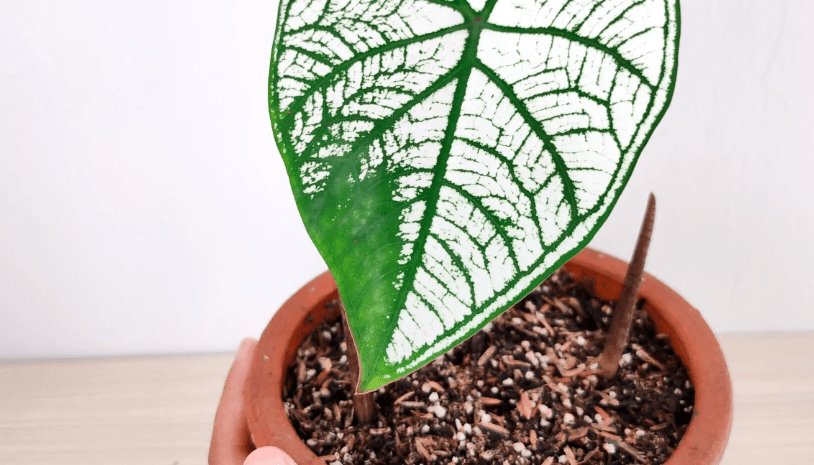
Optimal Growing Conditions
Light requirements for caladiums (sunlight vs. shade preferences)
Caladiums thrive in bright, indirect light, making them perfect for indoor or outdoor spaces with filtered sunlight. They prefer partial to full shade, so it’s important to avoid direct sunlight, especially during the hottest parts of the day. If growing outside, they can be placed under trees or in areas with dappled sunlight. If growing indoors, placing them near a window with sheer curtains or in a room with plenty of natural light will provide the ideal lighting conditions for their growth. It’s important to keep in mind that too much sun can cause the leaves to burn, while too little light can result in stunted growth. Finding the right balance of light is key to helping your caladiums thrive and produce vibrant, colorful foliage.
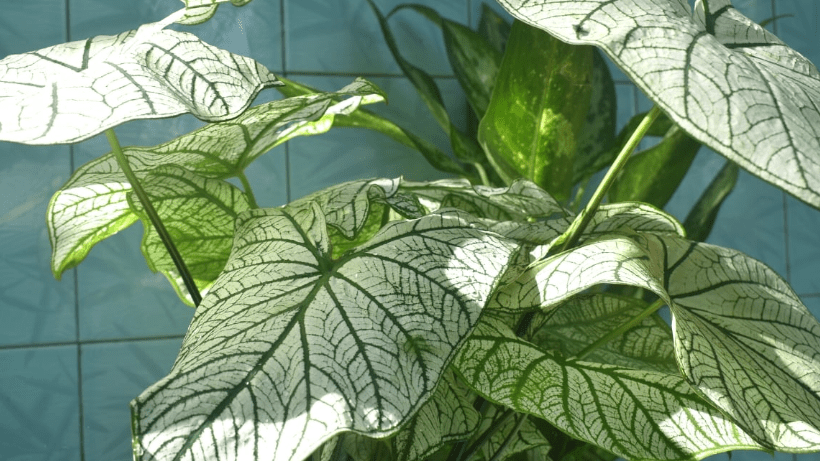
Ideal temperature and humidity levels for caladium growth
Caladiums thrive in warm, humid conditions, making them perfect for tropical and subtropical climates. The ideal temperature for caladium growth is between 70-85 degrees Fahrenheit during the day and no lower than 60 degrees Fahrenheit at night. They do well in high humidity levels, around 80-90%, so it’s important to keep them in a well-ventilated area with good air circulation to prevent fungal diseases. If you’re growing caladiums indoors, you can increase humidity levels by using a humidifier or placing a tray of water and pebbles near the plants. Maintaining the right temperature and humidity levels is crucial for the health and growth of your caladium plants.
Importance of proper ventilation and air circulation
Proper ventilation and air circulation are essential for the health and growth of your plants. Having good air circulation can prevent the buildup of excess moisture, which can lead to fungal diseases. It also helps to regulate the temperature and humidity levels, creating an optimal environment for plant growth. In addition, proper ventilation helps to distribute carbon dioxide and oxygen throughout the plant, which is essential for photosynthesis. To ensure the well-being of your plants, make sure they are placed in an area with good air circulation and consider using fans to improve ventilation. This will help your plants thrive and remain healthy.
Watering and Feeding Schedule
Guidelines for watering caladiums (frequency, soil moisture levels)
Caladiums should be watered regularly, keeping the soil consistently moist but not waterlogged. It’s essential to water the plants deeply, allowing the water to soak into the roots. The frequency of watering will depend on the temperature and humidity levels in your area, but typically, caladiums should be watered 1-2 times per week. During hotter periods, you may need to water more frequently to ensure the soil stays moist. It’s important to monitor the soil moisture level and adjust your watering schedule accordingly. Additionally, using a well-draining soil mix can help prevent waterlogging and keep the roots healthy. When it comes to feeding your caladiums, a balanced fertilizer can be applied every 4-6 weeks during the growing season. Following these guidelines will help ensure the proper growth and health of your caladium care plants.
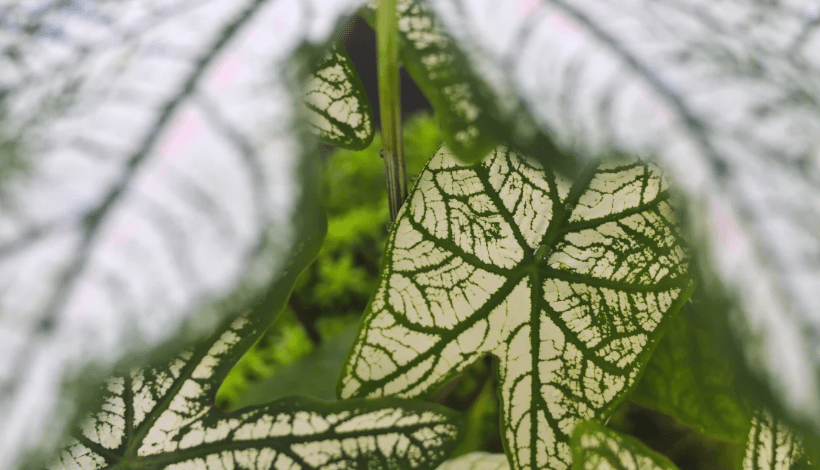
Best practices for fertilizing caladiums (types of fertilizers, application methods)
When it comes to fertilizing caladiums, it’s important to use a balanced fertilizer to provide the necessary nutrients for healthy growth. Look for a fertilizer with an NPK ratio of 10-10-10 or 20-20-20 to ensure the plants get the right balance of nitrogen, phosphorus, and potassium. You can also use a slow-release fertilizer to provide a steady supply of nutrients over time. When applying the fertilizer, make sure to follow the instructions on the packaging and avoid over-fertilizing, which can damage the plants. It’s best to apply the fertilizer in the early spring when the plants are actively growing, and then reapply every 4-6 weeks during the growing season. Be sure to water the plants after applying the fertilizer to help it dissolve and reach the roots. Following these best practices for fertilizing caladiums will help ensure healthy, vibrant plants.
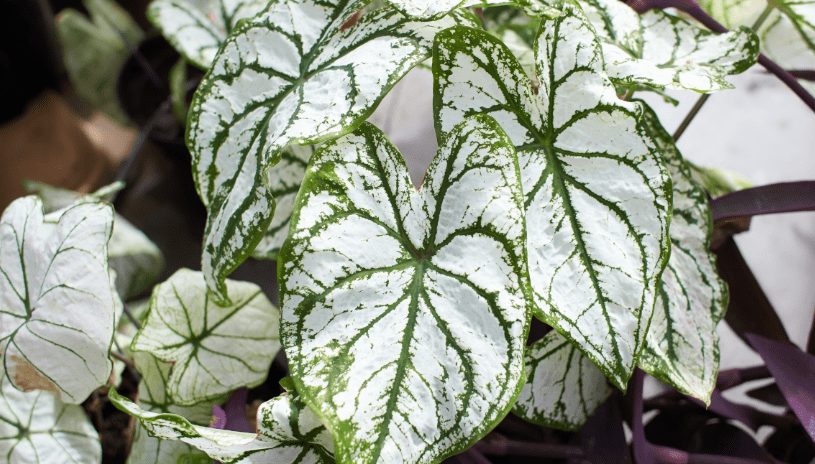
Adjusting watering and feeding routines based on seasonal changes
Is crucial for the health of your plants. In the spring and summer months, when the weather is warmer and the plants are actively growing, you will need to water and feed them more frequently. As the weather cools down in the fall and winter, you will need to reduce the amount of water and fertilizer you give to your plants. This will help prevent over-watering and over-fertilizing, which can damage the plants. It’s also important to monitor the moisture levels in the soil and adjust your watering schedule accordingly. In addition, you can use a slow-release fertilizer to provide a steady supply of nutrients to the plants throughout the season. By adjusting your watering and feeding routines based on seasonal changes, you can help your plants thrive and remain healthy year-round.
Maintenance and Pruning Tips
How to prune caladium plants to promote healthy growth
Pruning your caladium plants is important for promoting healthy growth. You should prune any yellow or brown leaves to encourage new growth. It’s also important to remove any dead or damaged foliage to prevent disease and pests. When pruning, make sure to use clean, sharp tools to make clean cuts and avoid damaging the plant. You can also prune your caladium plants to control their size and shape. If you want to promote bushier growth, you can pinch off the tips of the stems. This will encourage the plant to produce more lateral shoots and create a fuller appearance. Just be sure not to over-prune, as this can stress the plant. Overall, regular maintenance and pruning of your caladium plants will help keep them healthy and looking their best.
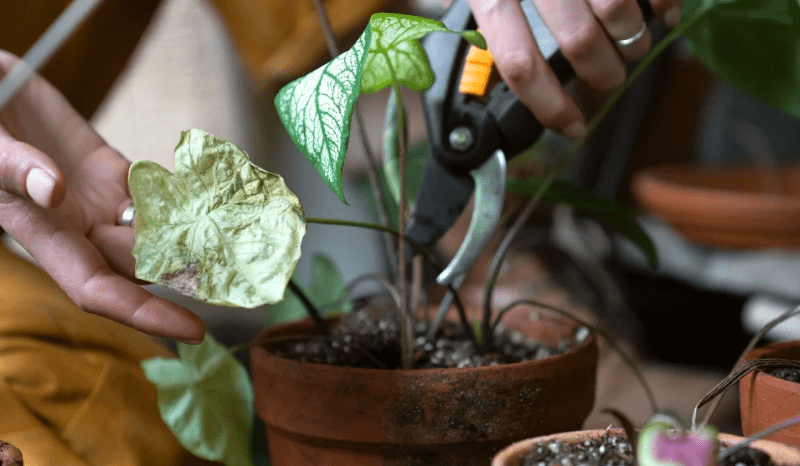
Removing dead or yellowing leaves
Is an important part of plant care. These leaves can attract pests and diseases, so it’s important to remove them as soon as you notice them. You can simply prune them off with clean, sharp scissors or gardening shears. This will not only improve the appearance of the plant, but also promote overall health and growth. When removing dead or yellowing leaves, be sure to also check for any signs of disease or pest infestations and take appropriate action to address these issues. Regularly removing dead or yellowing leaves will help your plants stay healthy and vibrant.
Managing pests and diseases affecting caladiums
Can be challenging, but with the right approach, you can keep your plants healthy and thriving. One key strategy is to regularly inspect your plants for any signs of pests or diseases. Look for chewed or discolored leaves, unusual spots or lesions, and any signs of insect activity. If you notice any of these issues, take action immediately to address them. You can use insecticidal soap or neem oil to control pests, and fungicides to treat diseases. It’s also important to ensure that your plants are getting the right amount of water and sunlight, as healthy plants are more resistant to pests and diseases. Additionally, proper spacing and good air circulation can help prevent the spread of diseases. By staying vigilant and taking proactive measures, you can effectively manage pests and diseases affecting your caladiums and enjoy beautiful, healthy plants in your garden.
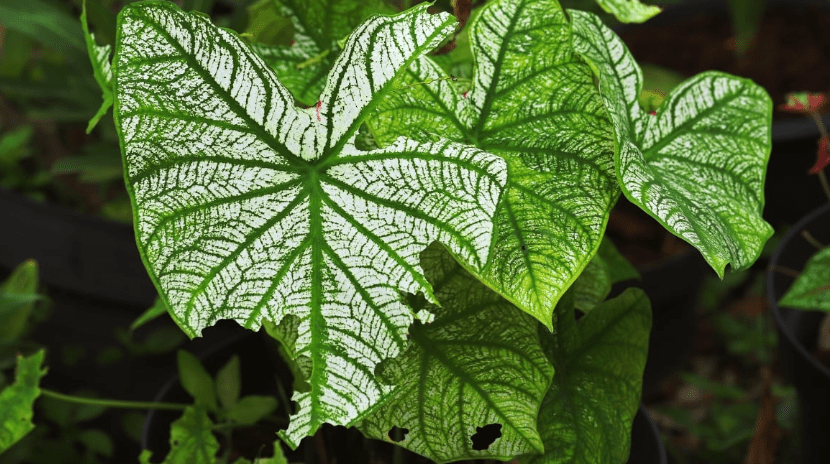
Propagation Techniques
Are essential for the healthy growth and reproduction of plants. There are several key strategies for effective propagation. One important technique is taking cuttings from a healthy parent plant and rooting them in water or a rooting medium. This allows you to create new plants that are genetically identical to the parent plant. Another technique is division, which involves separating a plant into smaller sections and replanting them to create new individual plants. This is commonly used for plants with rhizomes or tubers, such as iris or dahlias. Additionally, layering is a propagation technique in which a stem is bent and covered with soil, encouraging it to produce roots and form a new plant. It’s important to carefully research and understand the specific propagation needs of each plant species to ensure successful reproduction. By using these techniques, gardeners can expand their plant collection and create a thriving, diverse garden.
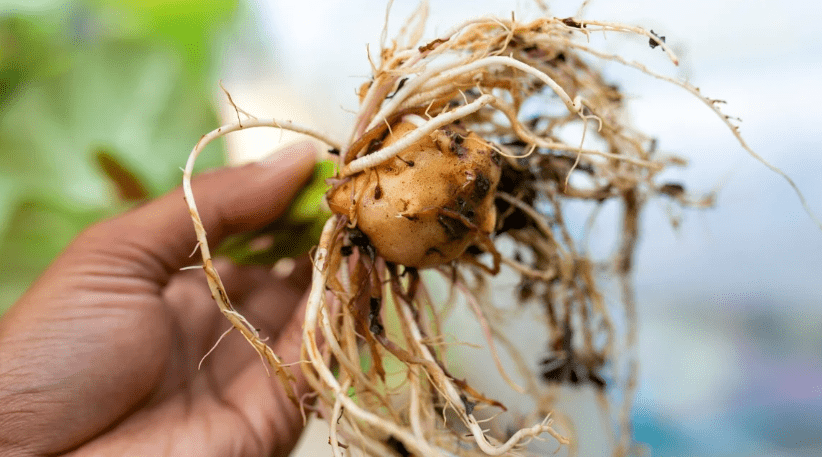
Common Issues and Solutions
Common problems encountered with caladiums (e.g., pests, diseases)
Caladium care are beautiful plants but can be susceptible to pests and diseases. Some common pests that can affect caladiums include spider mites, aphids, and thrips. To prevent these pests, it’s important to regularly inspect your plants, keep them well-watered, and remove any dead or decaying plant material. If you do notice pest infestations, you can use insecticidal soap or neem oil to control the problem.
As for diseases, caladiums can be prone to leaf spot and root rot. To prevent leaf spot, avoid overhead watering and make sure the soil is well-draining. If root rot becomes an issue, it’s important to ensure that the plant’s roots are not sitting in waterlogged soil.
In conclusion, being proactive in caring for your caladium care and addressing any potential pest or disease issues promptly can help ensure that your plants remain healthy and vibrant.
Troubleshooting tips for addressing caladium care issues
Caladiums are beautiful and vibrant plants, but like any plant, they can have their share of issues. One common problem that many caladium owners face is dealing with pests. Some common pests that can affect caladiums include spider mites, aphids, and thrips. To prevent these pests, it’s important to regularly inspect your plants, keep them well-watered, and remove any dead or decaying plant material. If you do notice pest infestations, you can use insecticidal soap or neem oil to control the problem. Another issue that caladiums can face is diseases. They can be prone to leaf spot and root rot. To prevent leaf spot, avoid overhead watering and make sure the soil is well-draining. If root rot becomes an issue, it’s important to ensure that the plant’s roots are not sitting in waterlogged soil. In conclusion, being proactive in caring for your caladiums and addressing any potential pest or disease issues promptly can help ensure that your plants remain healthy and vibrant.
Preventive measures to maintain healthy caladium plants
Include regular inspections for pests, proper watering, and removing any dead or decaying plant material. It’s important to keep your plants well-watered, as both overwatering and underwatering can be detrimental to their health. If you do notice pest infestations, you can use insecticidal soap or neem oil to control the problem. Additionally, caladiums can be prone to diseases such as leaf spot and root rot. To prevent leaf spot, it’s essential to avoid overhead watering and ensure the soil is well-draining. If root rot becomes an issue, make sure the plant’s roots are not sitting in waterlogged soil. Being proactive in caring for your caladiums and addressing any potential pest or disease issues promptly can help ensure that your plants remain healthy and vibrant. Remember, prevention is key to maintaining healthy caladium care plants.
Seasonal Care Tips
Winter care for caladiums (storage, dormancy)
Now that winter is approaching, it’s important to start thinking about how to care for your caladiums during the colder months. When temperatures start to drop, you’ll need to prepare your caladiums for dormancy. This means cutting back on watering and allowing the foliage to die back naturally. Once the foliage has died back, you can carefully dig up the tubers and store them in a cool, dry place for the winter. Make sure to clean off any excess soil and allow the tubers to dry for a few days before storing them. You’ll want to store them in a breathable container such as a mesh bag or paper bag, and keep them in a cool, dark location to prevent them from sprouting prematurely. Check on the tubers periodically throughout the winter to make sure they are not rotting or drying out. With proper storage and care, your caladiums should be ready to be replanted in the spring and will continue to thrive for years to come.
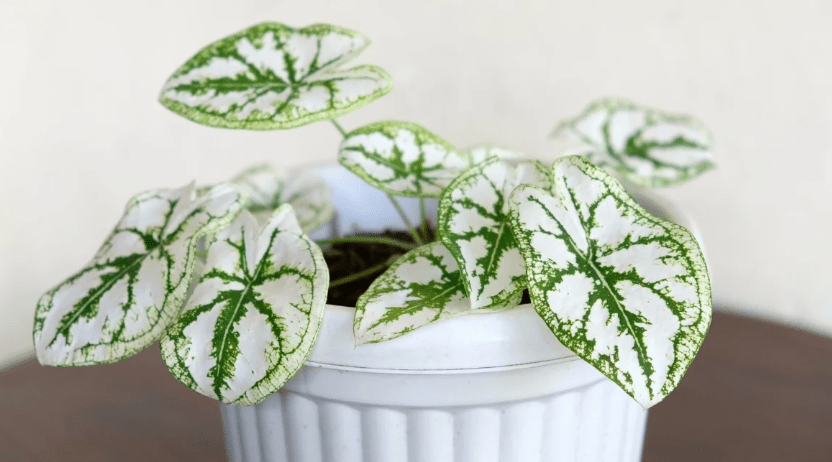
Summer care tips to protect caladiums from heat stress
Caladiums are beautiful, tropical plants that thrive in warm, humid conditions. However, they can become stressed during the hot summer months. To protect your caladiums from heat stress, it’s important to provide them with the right care. First, make sure to water your caladiums regularly, keeping the soil consistently moist but not waterlogged. It’s a good idea to water them in the early morning or late evening to avoid evaporation in the heat of the day.
Additionally, provide shade for your caladiums during the hottest parts of the day. You can do this by placing them in a spot with filtered sunlight or by using a shade cloth to protect them from direct sun exposure. Mulching around the base of the plants can also help to retain moisture and keep the soil cooler.
If you notice your caladiums starting to wilt or show signs of heat stress, consider misting the leaves with water to help cool them down. You can also place a fan nearby to improve air circulation and reduce heat buildup around the plants.
Finally, consider adding a layer of organic compost or mulch to the soil to help maintain moisture levels and provide essential nutrients to the plants. With the right care and attention, your caladiums can thrive through the summer heat and continue to add beauty to your garden.
Benefits of Growing Caladiums
Caladiums are a beautiful addition to any garden, and there are several benefits to growing them. These plants are known for their colorful and vibrant foliage, which can add a pop of color to any outdoor space. In addition to their aesthetic appeal, caladiums are relatively low-maintenance plants, making them a great option for gardeners of all experience levels. They thrive in shady areas, making them a perfect choice for gardens with limited sunlight. Caladiums also have the ability to purify the air, making them a great choice for indoor spaces as well. With the right care, these plants can thrive and continue to bring beauty to your garden for years to come.
In conclusion, taking care of your Caladium plants involves providing the right amount of water, light, and soil conditions. It’s important to monitor their growth and make adjustments as needed to ensure they thrive in your indoor space. With proper care and attention, your Caladium care plants can add beauty and vibrancy to your home. For more detailed information on how to care for your indoor plants, check out our upcoming series on indoor gardening tips.
Frequently asked questions And Answer
Caladium plants prefer moist soil, so it’s important to water them regularly. Check the soil moisture and water when the top inch of soil feels dry to the touch.
Caladium plants thrive in bright, indirect light. Avoid direct sunlight as it can scorch their delicate leaves.
Yes, caladium plants benefit from a balanced, water-soluble fertilizer applied every 4-6 weeks during the growing season.
Caladium plants can be propagated by dividing the tubers. Simply carefully divide the tubers and plant them in separate containers with moist soil.
Caladium plants prefer temperatures between 65-85°F (18-29°C). Avoid exposing them to temperatures below 60°F (15°C).
During the winter, reduce watering and allow the soil to dry out slightly between waterings. Keep the plants in a warm, humid environment to help them survive the winter dormancy period.
Caladium plants may need to be repotted every 2-3 years as they outgrow their containers. Choose a slightly larger pot and fresh, well-draining soil.
Yellowing leaves may be a sign of overwatering or underwatering. Adjust your watering schedule accordingly and ensure the plant is receiving the right amount of light.
